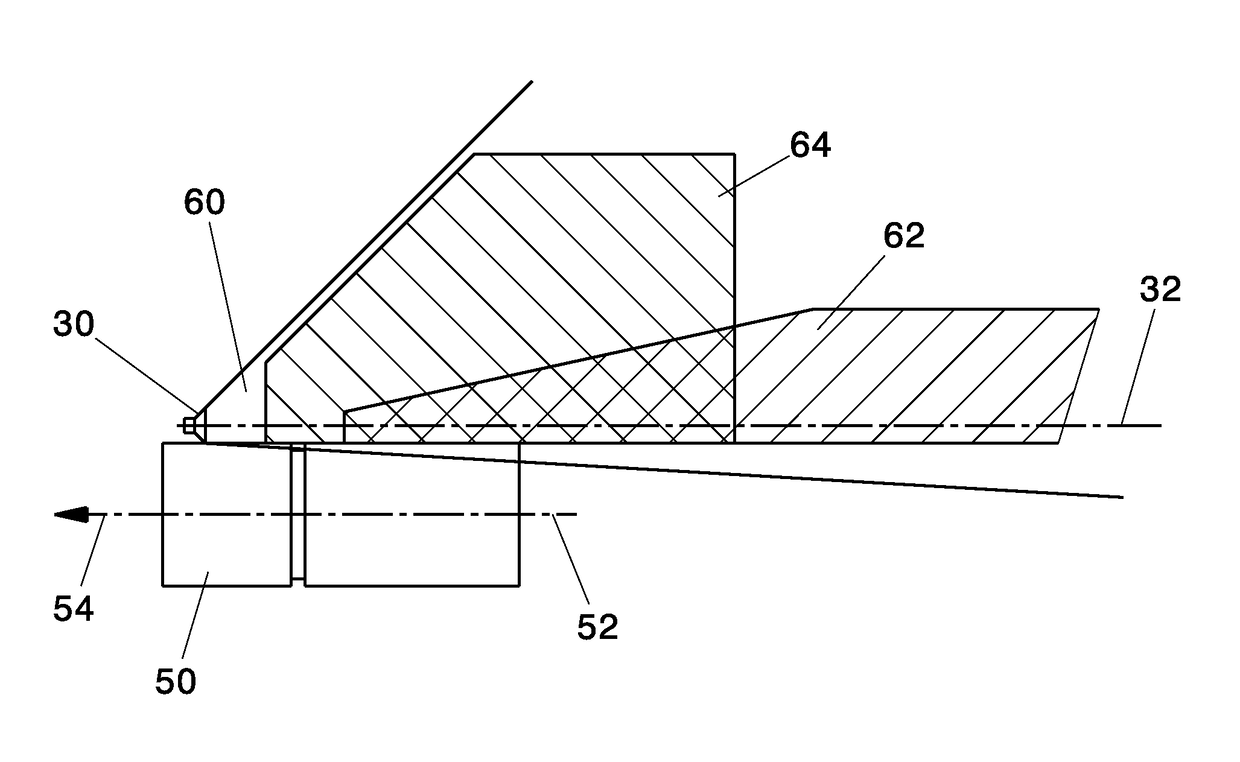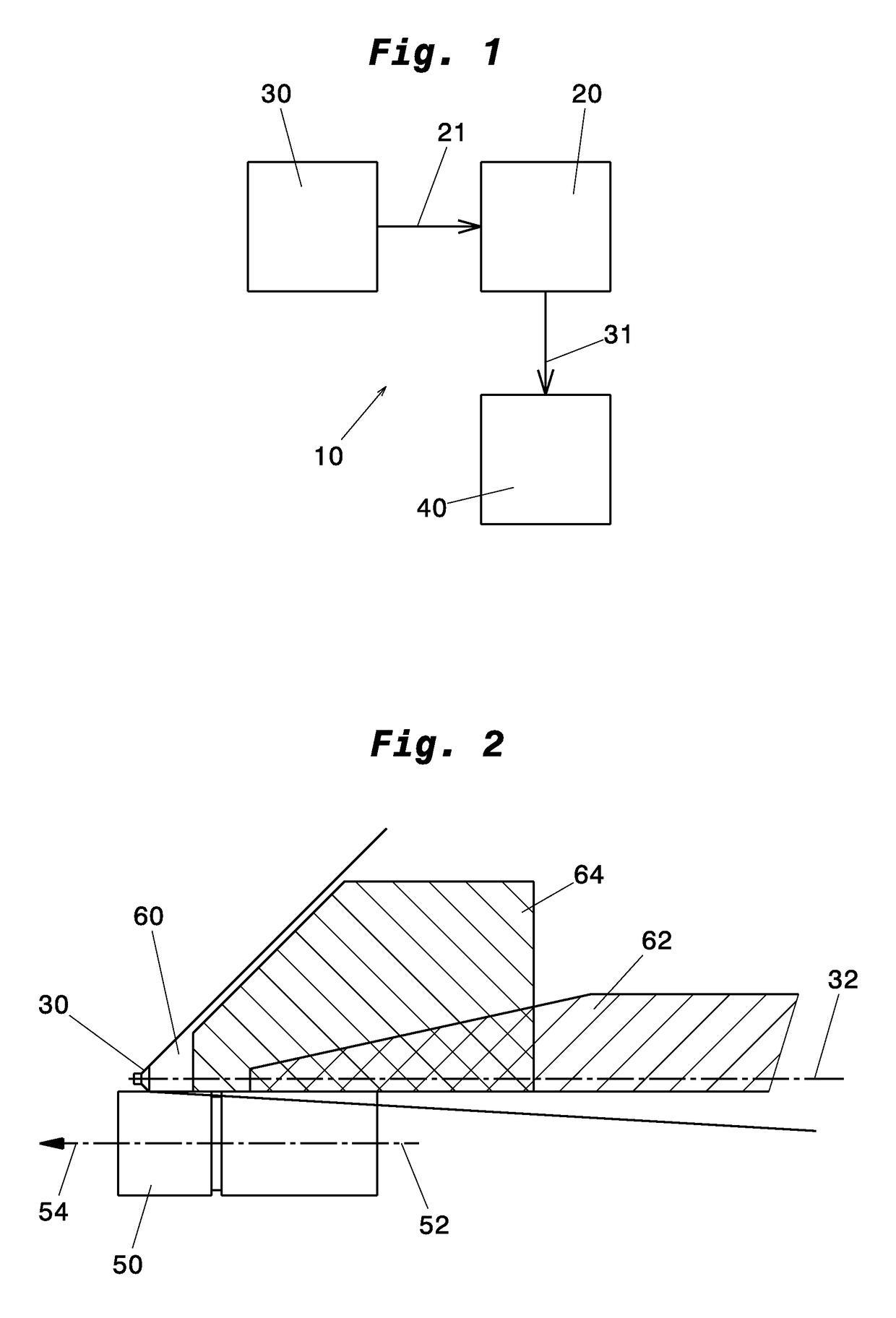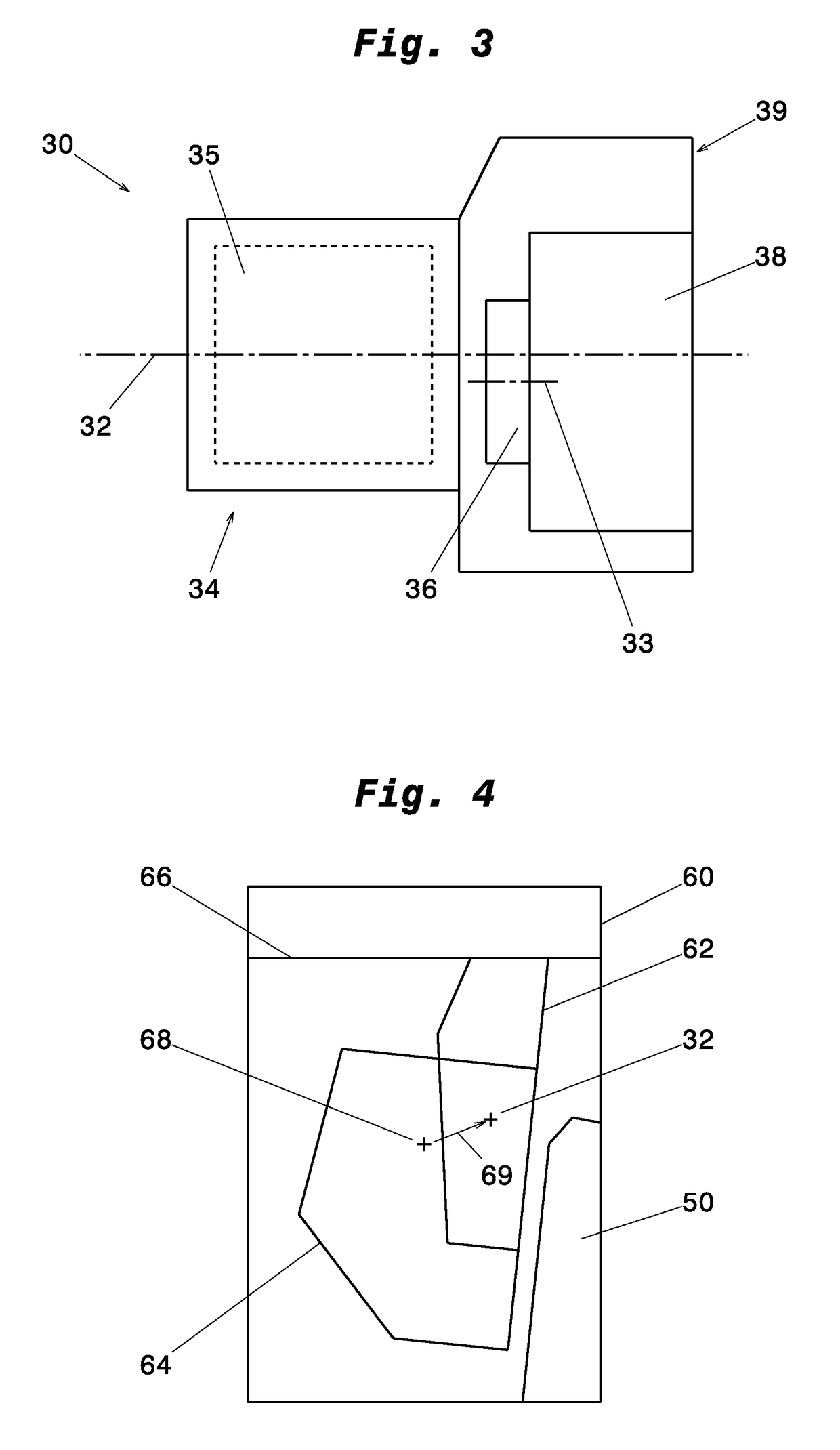Viewing system for vehicles, in particular commercial vehicles
a technology for viewing systems and commercial vehicles, applied in closed circuit television systems, television systems, electrical equipment, etc., can solve the problems of difficult or nearly impossible for vehicle drivers to adequately keep accident-critical (accident-prone) areas around commercial vehicles, difficult for drivers to keep all mirrors in view at the same time, obstacles and other vehicles are often difficult to quickly and accurately identify in mirrors, etc., to achieve fewer technical implementation costs
- Summary
- Abstract
- Description
- Claims
- Application Information
AI Technical Summary
Benefits of technology
Problems solved by technology
Method used
Image
Examples
Embodiment Construction
[0044]FIG. 1 schematically shows a viewing system 10. The viewing system 10, which for example can be used in a commercial vehicle such as a truck, comprises at least one image capture unit 30, a computing unit 20, and a reproducing (display) unit 40. The viewing area sensed (captured) by the image capture unit 30 is provided to a computing unit 20 via a first connection 21, for example a data cable suitable for digital transmission of the images captured by the image capture unit 30. The computing unit 20 can be configured to modify the sensed images in a desired manner into a reproduced (displayable) image. For example, the computing unit 20 can process one of the images received from the image capture unit 30 so that certain traffic objects are recognized and identified in the displayed image. The reproduced image modified by the computing unit 20 is then provided to the reproducing unit 40 via a second connection 31, for example a data cable suitable for digital transmission of ...
PUM
 Login to View More
Login to View More Abstract
Description
Claims
Application Information
 Login to View More
Login to View More - R&D
- Intellectual Property
- Life Sciences
- Materials
- Tech Scout
- Unparalleled Data Quality
- Higher Quality Content
- 60% Fewer Hallucinations
Browse by: Latest US Patents, China's latest patents, Technical Efficacy Thesaurus, Application Domain, Technology Topic, Popular Technical Reports.
© 2025 PatSnap. All rights reserved.Legal|Privacy policy|Modern Slavery Act Transparency Statement|Sitemap|About US| Contact US: help@patsnap.com



